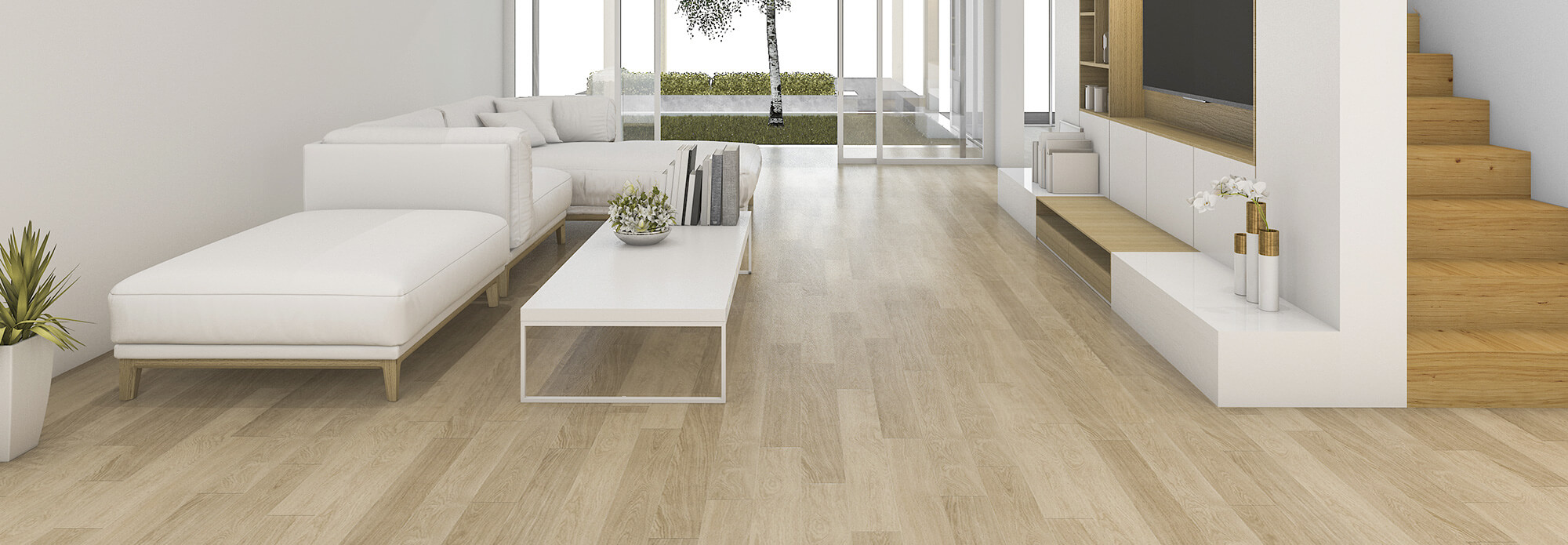
Engineered vs Laminate
Engineered Wood Flooring
|
Laminate Flooring | |
| Composition | Engineered wood flooring is made of high-quality plywood with a veneer of pre-finished fine hardwood on top. | Laminate flooring is made of thin, pressed wood board with an image of wood on top covered by a clear wear layer to protect the image. Below is an attached or separate foam underlayment. |
| Amount of Natural Wood in the Product | The thin veneer skin on top is 100- percent wood. The base layers are high-quality plywood, which is no more natural wood than laminate flooring's pressed wood base. Based on average thicknesses, base and veneer combined, engineered wood flooring can be as much as 25-percent natural wood.
|
Even though laminate flooring is composed of a majority of wood fibers, none of this wood is in its natural state. There is a common conception that laminate is made of plastic; this is false. While the topmost wear layer is a type of plastic and the underlayment is made of closed-cell foam, laminate is mostly made of a variation of wood. Laminate flooring contains no natural wood. |
| Cost | Expect to pay nearly as much for engineered wood flooring as for solid hardwood. The majority of engineered wood flooring will be more expensive than most laminate flooring.
|
Laminate flooring ranges from extremely cheap for 6 mm standard oak-look laminate to moderately expensive for long-plank 12 mm boards. |
| Thickness | An average veneer thickness is 3/16- inch. Total product thickness, including all layers, averages at 3/4-inch.
|
All layers combined, the entire thickness of laminate flooring ranges from about 1/4-inch to about 1/2-inch. |
| Refinishing and Repair | Because of its thin veneer, an engineered wood floor can be lightly refinished only a few times before the veneer begins to wear down to the base plywood layers. | Laminate flooring cannot be refinished in any traditional wood repair sense, though color- matching wood putty can be applied to small holes. Because laminate is installed as a floating floor (unattached to the sub-floor or underlayment), boards can be replaced on a piecemeal basis with relative ease. |

